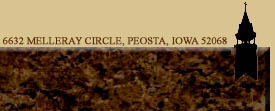|
To Be a Monk |
To be a monk is first of all to be a man. Like all men, monks are seeking the meaning of life and the fulfillment of their capacities. In other words, monks are just like everyone else: people who want to be happy
But there are differences. Monks have always believed that happiness is to be found within, in the depths of the heart. So monastics have always sought true happiness in the moral-mystical sphere of right conduct, deeper knowledge of, and union with Reality. Lover and prayer, good deeds and contemplation: these are the elements, variously understood, of monastic life in all ages and cultures. Hence we can say, in broadest terms: to seek one's happiness in a personal love relationship with the Absolute is to be a monk at heart. Or ahian, to stake your life on the belief that consummate union with ultimate Reality "with all your heart and all your soul, with all your mind and all your strength" is the greatest possible fulfillment in life--this is already to be a monk in spirit.
Monasticism is a very ancient human phenomenon. It began in the East. There were Jain monks in India as early as the 2nd millenium before Christ. Brahmanism gave birth to many monastic movements. Buddha died in the first quarter of the 6th century B.C. and in subsequent generations his philosophy was embraced by Far Eastern peoples. In the Western world there was practically no develed monasticism before the Incarnation. The Essenes and Qumran, dating from the century before Christ in Judaic circles, seems to be the closest, though faint, foreshadowing of Christian monasticism. The monasticism of Western Civilization is a Christian phenomenon.

 An off-site link
An off-site link An e-mail link
An e-mail link